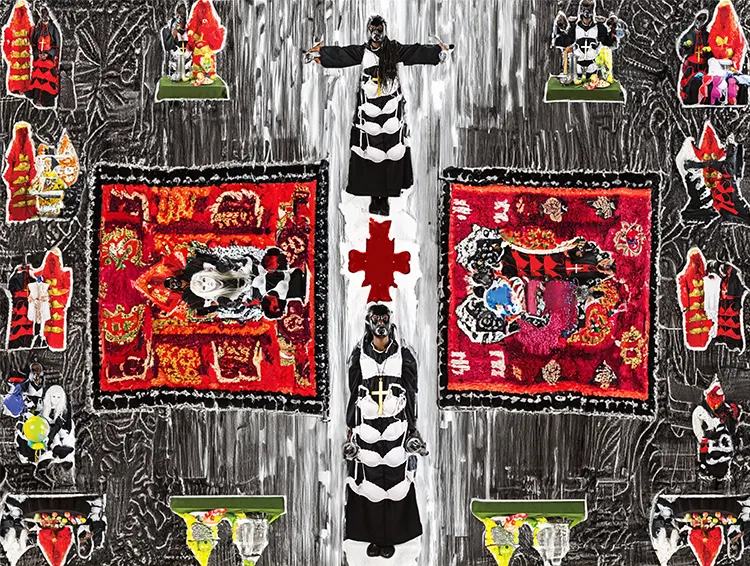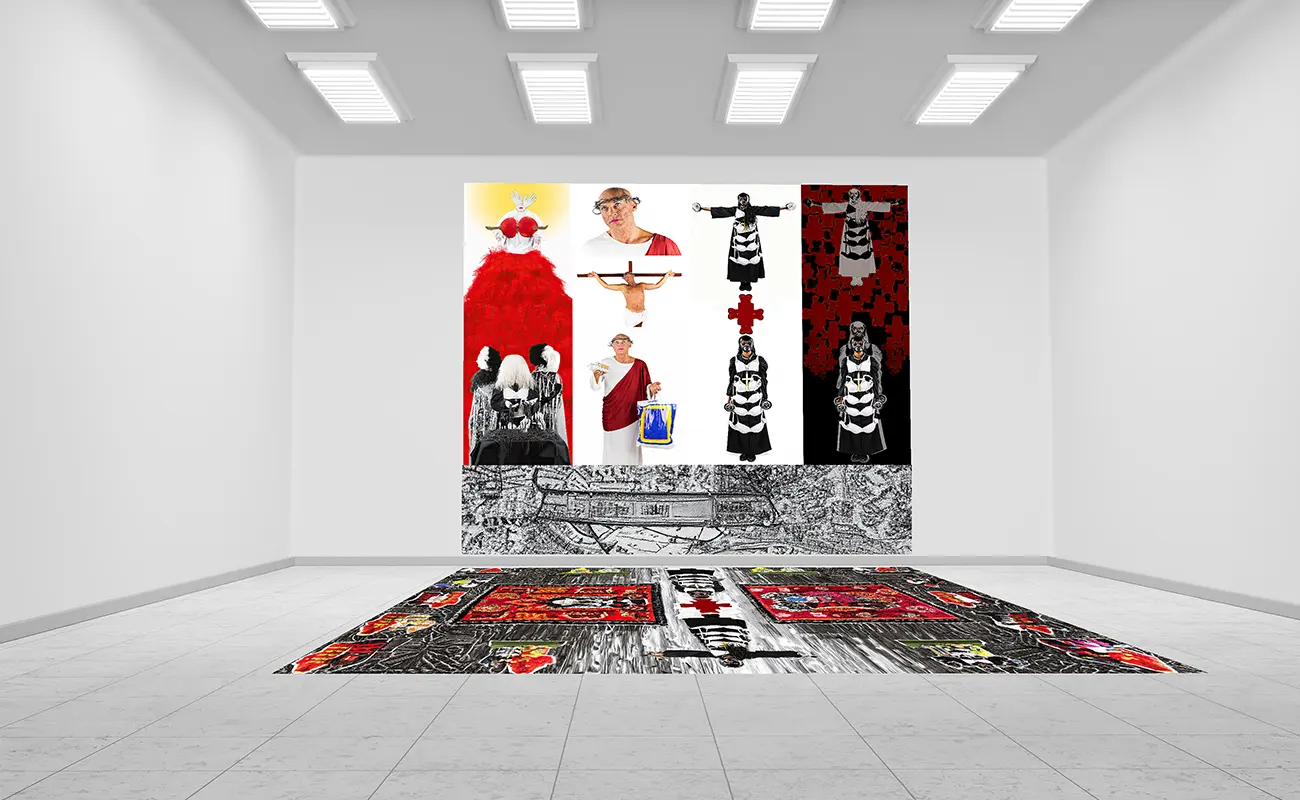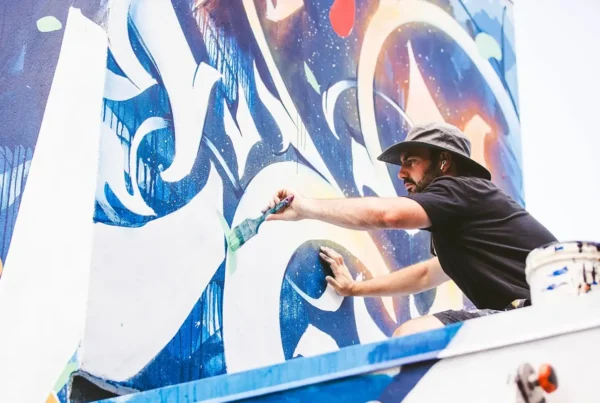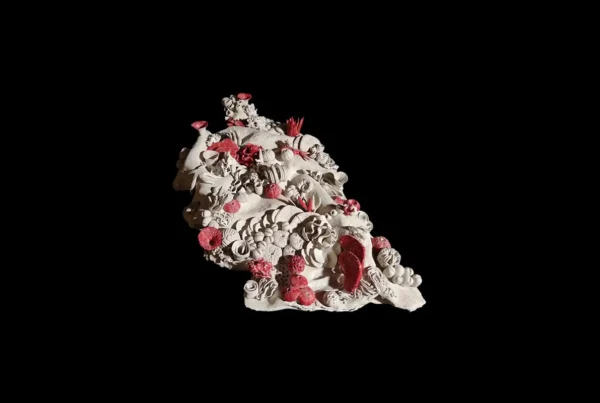“I believe that these combinations of adversity have shaped my artistic perspective.”
From Częstochowa’s Spirituality to the Canvas: A Historical Exploration
Katharina Goldyn, a distinguished artist, traces her roots back to the illustrious Polish city of Częstochowa. Notably, this city stands as a beacon of religious significance due to its housing of the revered Jasna Góra Monastery. Within this sanctuary lies the portrait of the Mother of God from Częstochowa, commonly referred to as the Black Madonna, a painting held in profound reverence by the Polish populace.
Goldyn’s formative years unfolded at the juncture of the 1970s and 1980s, set against the politically charged backdrop of Communist Poland. During this epoch, religion faced considerable suppression, particularly within households where family members occupied noteworthy political positions. It’s a historical irony that while Częstochowa held profound religious significance, the prevailing regime’s endeavors sought to alienate the citizenry from their faith. Such efforts, paradoxically, often propelled individuals into a deeper quest for spiritual enlightenment, sometimes as a form of silent resistance to the constraints of the times. These societal dichotomies played a pivotal role in shaping many, pushing them to contemplate the intricate interplay between faith and politics, subsequently drawing them nearer to their spiritual roots.
Goldyn’s artistic aspirations led her to the renowned Academy of Fine Arts in Wrocław, where she honed her craft and developed her distinctive voice as an artist.
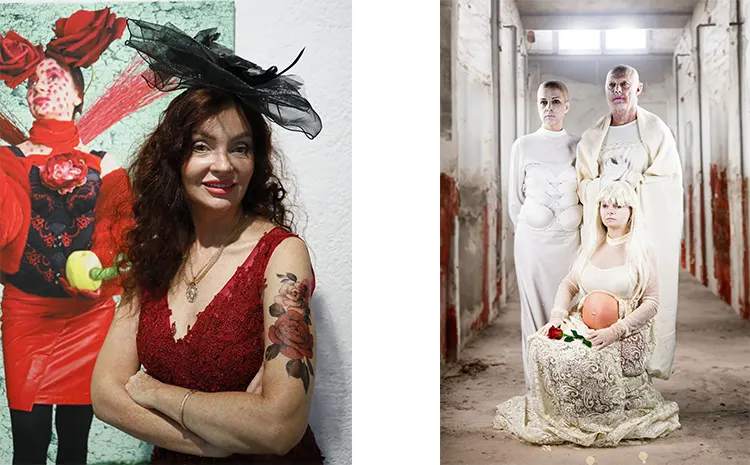
Finding Solace in Nature: A Decade of Transformation and Challenge
At the age of 25, Katharina Goldyn relocated to Germany, entering into matrimony with a sculptor 43 years her senior. This union symbolized the coming together of two distinct artistic epochs. For nearly a decade, the couple immersed themselves in a secluded forest abode, a serene sanctuary distanced from the clamor of the outside world and deeply connected to nature’s embrace. This almost ascetic existence, devoid of societal expectations, profoundly transformed Goldyn’s worldview. Yet, amidst the tranquility, lay hidden challenges.
Goldyn’s spouse, grappling with mental health difficulties, inflicted both physical and emotional torment upon her. She bore this agonizing burden in silence, concealing it deep within her soul. Yet, as the adage goes, time possesses the power to heal. Today, after years of introspection and healing, Goldyn courageously unveils this tumultuous phase of her journey. Through her poignant narrative, she resonates with the silent anguish of numerous women who navigate similar, or even more grievous, ordeals.
The verdant expanses of Lower Bavaria acted as Goldyn’s refuge, shielding her from conventional life and societal judgments. By daylight, it epitomized an idyllic haven, bursting with vitality and splendor. However, as nightfall approached, this paradise metamorphosed into a realm of shadows and fears. Such stark contrasts deeply influenced Goldyn’s artistic vision. She began to celebrate the raw unpredictability of nature, eschewing traditional artistic standards. For her, every tree and leaf stood as a testament to life’s refusal to conform to rigid boundaries.

Katharina Goldyn: Elevating the Feminine in Art and Religion
In 2023, at the Augsburg Cathedral’s proclamation, Bishop Meier voiced, “the Church’s future is rooted in femininity.” Such a declaration resonates with Katharina Goldyn’s belief that the world’s momentum is tilting towards the feminine essence. Goldyn’s consistent message to women is an echoing affirmation of unity and strength.
Goldyn’s art seamlessly fuses age-old traditions with modern symbiotics, drawing inspiration from surrealists and Bergson’s philosophy. From 2015 onwards, she delved deep into themes that critically examine society, with a pronounced emphasis on women’s role in the Catholic domain. Her works consistently revolve around the empowering themes of WOMAN, POWER, and CHANGE.
My woodland experiences introduced me to grand sculptures, reshaping my view from the classical art lens, inspiring creations like the twig-faces. In 2009, I commenced incorporating genuine elements of nature into my pieces, such as attaching cacti. Come 2012, classics like the Last Supper underwent a transformation in my hands, as I replaced male protagonists with female figures. As years rolled on, a consistent theme emerged: highlighting the significance of women, particularly in Christian contexts.
Goldyn’s art found its early muse in the fervent expressionism of Vincent van Gogh. Her creative journey further flourished through insights from Ignacy Witkiewicz, the trailblazing theatrical ideas of Tadeusz Kantor, and the captivating works of Nike de San Phalle and Frida Kahlo.

Photographic Staging: The Pinnacle of Goldyn’s Artistic Pursuits
Since 2015, Katharina Goldyn has primarily engaged in the realm of photographic staging. Although her affinity for photography is evident, Goldyn’s essence resonates deeply with the nuances of painting, sculpture, and drafting. Her lifelong journey in painting, drawing, and installations profoundly influences her photographic pursuits. Every facet, from the meticulous design of costumes and props to the precise orchestration of scenes, showcases her dedication. Goldyn’s photography emanates the perspective of a seasoned painter, seamlessly intertwining a medley of artistic disciplines.
A quintessential project envisioned by Goldyn is the ‘Glorification-woman’ concept. Beyond the realm of traditionally displayed images, this ambitious project features a monumental artwork placed on the floor. Goldyn’s aspiration is to transcend mere visual engagement; she invites viewers to tangibly interact with the masterpiece, fostering a tactile and enveloping experience. The art world eagerly awaits the realization of this innovative undertaking.
